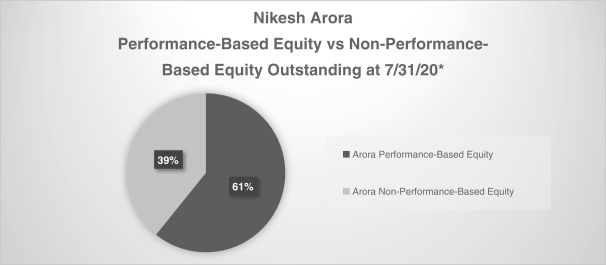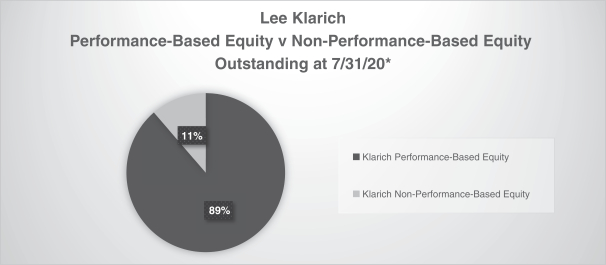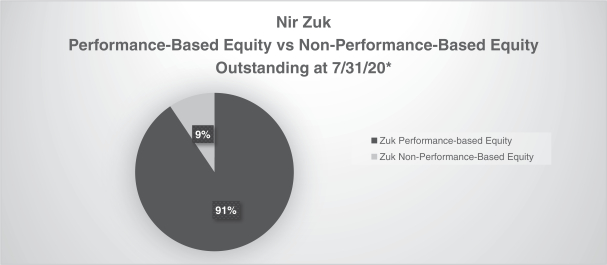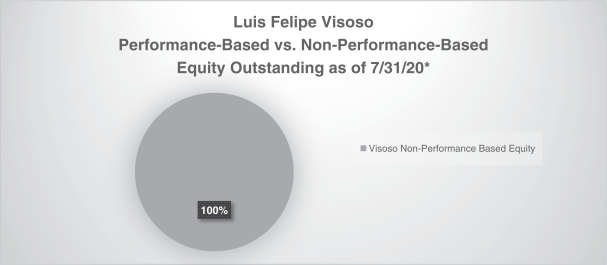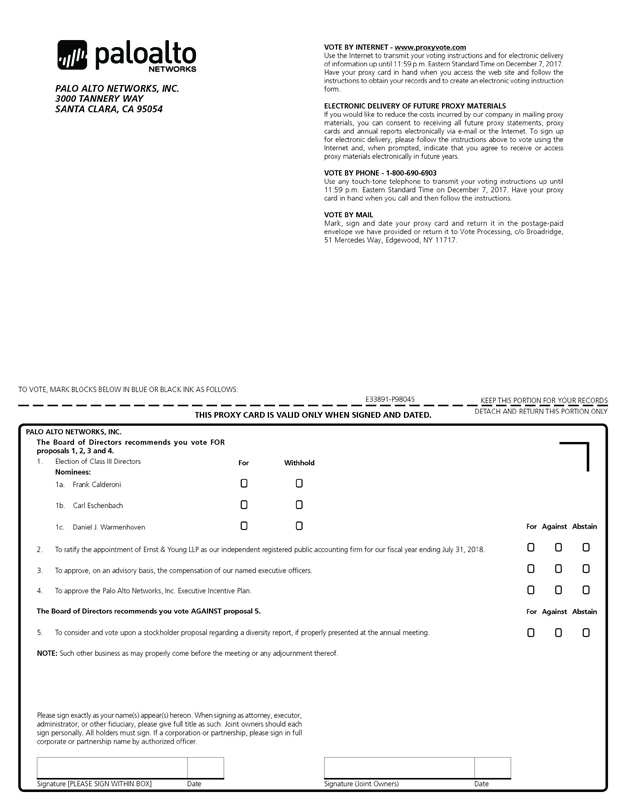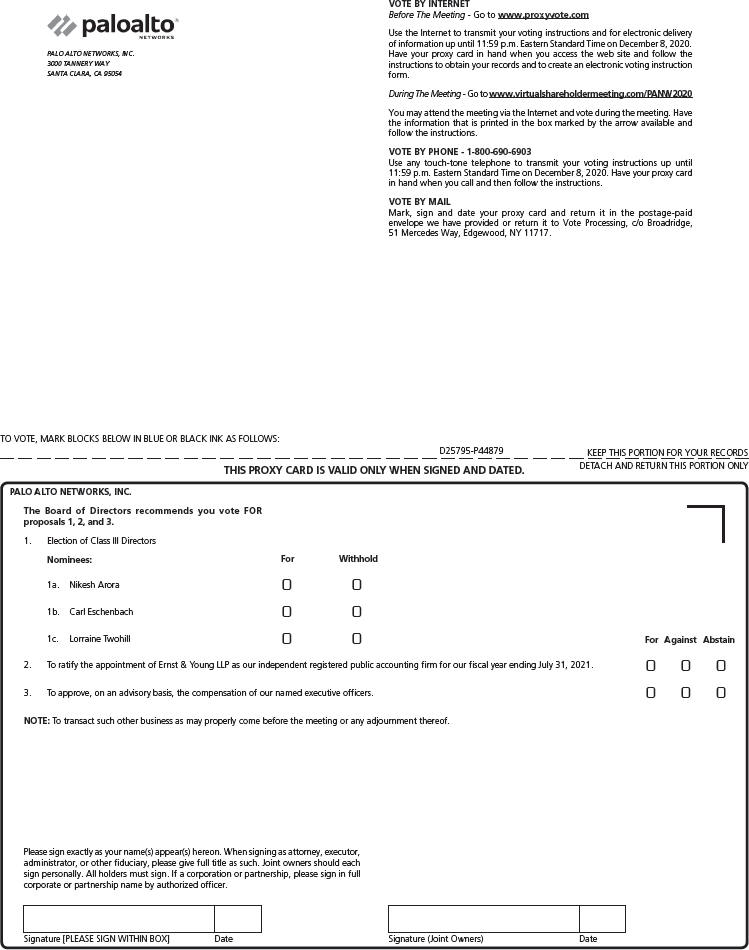RELATED PERSON TRANSACTIONS
We describe below transactions and series of similar transactions, since the beginning of our last fiscal year, to which we were a party or will be a party, in which:
the amounts involved exceeded or will exceed $120,000; and
any of our directors, nominees for director, executive officers, or beneficial holders of more than 5% of any class of our outstanding capital stock had or will have a direct or indirect material interest.
Other than as described below, there has not been, nor is there any currently proposed, transactions or series of similar transactions to which we have been or will be a party.
Employment Arrangements and Indemnification Agreements
We have entered into employment arrangements with certain current and former executive officers. See the section titled “Discussion“Discussion of our Fiscal 20172020 Executive Compensation Program—Executive Employment Agreements.Agreements.”
We have also entered into indemnification agreements with our directors and executive officers. The indemnification agreements and our amended and restated certificate of incorporation and amended and restated bylaws require us to indemnify our directors and officers to the fullest extent permitted by Delaware law.
Monica Anderson, the daughter of Mark Anderson, our President, is employed by us as a Corporate Sales Representative. Her annual salary and other cash compensation is approximately $107,754, and she receives benefits consistent with other employees serving in the same capacity. In addition, she received a grant of 194 RSUs during our fiscal year ended July 31, 2017.
Transactions with AT&T Inc., Anaplan, Inc., Google Inc., Sequoia Operations LLC and GoogleZoom Video Communications, Inc.
Mr. Donovan, one of our independent directors, iswas an executive officer at AT&T.&T until October 1, 2019. Since the beginning of our last fiscal year through October 15, 2017,2020, both directly and through our channel partners, we have sold an aggregate of approximately $58.8$55.9 million of products and services to AT&T, and have purchased an aggregate of approximately $0.2 million of AT&T products and services, all in arm’s length transactions. Mr. Calderoni, one of our independent directors until December 9, 2019, is an executive officer at Anaplan. Since the beginning of our last fiscal year through October 15, 2017,2019, both directly and through our channel partners, we have sold an aggregate of approximately $0.5$1.4 million of products and services to Anaplan and have purchased an aggregate of approximately $0.7$0.6 million of Anaplan products and services, all in arm’s length transactions. Mr. Ramaswamy, one of our independent directors until December 9, 2019, was an executive at Google until October 2018 and Ms. Twohill, one of our independent directors, is currently an executive at Google. Since the beginning of our last fiscal year through October 15, 2017,2020, both directly and through our channel partners, we have sold an aggregate of approximately $21.8 million of products and services to Google and have purchased an aggregate of approximately $4.5$119.1 million of Google products and services, all in arm’s length transactions. Messrs. Eschenbach and Goetz, each an independent director, are a member and partner, respectively, of Sequoia. Since the beginning of our last fiscal year through October 15, 2020, both directly or through our channel partners, we have sold an aggregate of approximately $0.1 million of products and services to Sequoia Capital, all in arm’s length transactions. Mr. Arora, our CEO and Chair of the Board, became an advisor to Zoom Video Communications, Inc. (“Zoom”) in June 2020. Since the beginning of our last fiscal year through October 15, 2020, both directly and through our channel partners, we have sold an aggregate of approximately $13.2 million of products and services to Zoom and have purchased an aggregate of $1.3 million of Zoom products and services, all in arm’s length transactions.
Additionally, none of Ms. Twohill or Messrs. Arora, Donovan, Calderoni, Ramaswamy, Eschenbach or RamaswamyGoetz take part in the(or took part in, if he has resigned) discussion of transactions with us and (a) Google for Ms. Twohill and Mr. Ramaswamy, (b) Zoom for Mr. Arora, (c) AT&T for Mr. Donovan, (d) Anaplan for Mr. Calderoni, or Google, respectively,(e) Sequoia for Messrs. Eschenbach and Goetz, when such transactions are reviewed by our audit committee or board of directors. Additionally, AT&T expects its 2017 capital expenditures to be in the $22 billion range. AT&T’s purchases of our products and services, which totaled $58.8$55.9 million since the beginning of our last fiscal year through October 15, 2020, are not material to either us or AT&T. All transactions with AT&T, Anaplan, Google, Sequoia and GoogleZoom are subject to our rigorous related party transactions review process and policy, as further described below.






